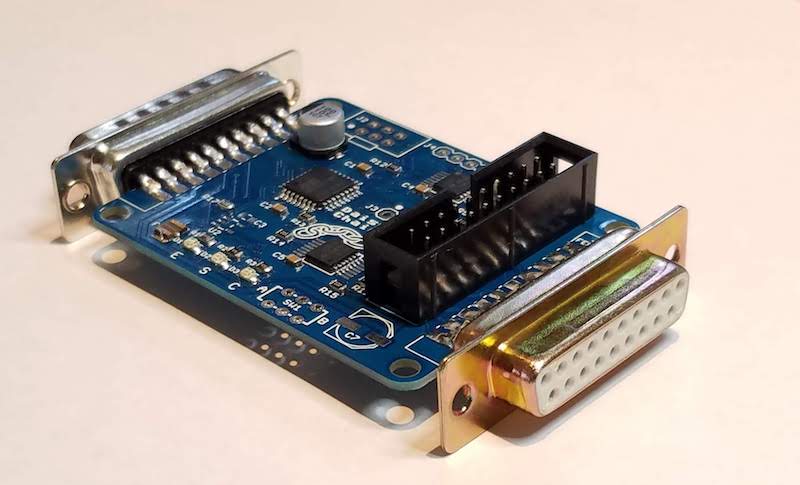Daisy Chainer Testing

Good news: the Daisy Chainer for Floppy Emu is finished, and working nicely in all my tests. With the Daisy Chainer, a mix of real and emulated disk drives can be combined into a single Apple II daisy chain for maximum flexibility. The real drives can be attached before or after the Floppy Emu.
I have a few Daisy Chainer boards available for sale now. Send me an email if you’re interested in getting one (use the Contact link at the page’s upper-right).
Not-so-good news: newly-assembled Daisy Chainer boards are a pain to test, and this is something I didn’t account for. A true functional test requires connecting the board to a Floppy Emu, an Apple II, and a variety of other disk drives, and then running through many different permutations of daisy chain configuration and disk emulation modes. It requires 15 minutes or more. That’s OK for a few hand-assembled units, but there’s no way I can do that for a larger production run.
To support faster testing, I’ve designed two special test boards that plug into the male and female DB19 connectors on the Daisy Chainer. These will enable some automated loopback testing of the main board using its own microcontroller. It won’t be a perfect test, but combined with some other automated tests for things like pin-to-pin solder shorts it should detect most likely assembly defects.
The problem is that in order to support the automated testing with the special test boards, I need to make some modifications to the Daisy Chainer PCB. I’ve finished that work, but I’m waiting for PCB delivery and then I need to assemble a second prototype. So it will probably be at least a month until full production of more Daisy Chainers is possible.
This is the first time I’ve ever been forced to redesign a PCB not because there was a problem with the device itself, but simply because the device was difficult to test efficiently. Lesson learned: when designing anything that you expect to build more than 10 units of, planning for testing should be an integral part of the design process.
Read 2 comments and join the conversation2 Comments so far
Leave a reply. For customer support issues, please use the Customer Support link instead of writing comments.


Did you figure out the trick to make it work with the Apple IIc? What was the fix?
My solution was to simply wait longer after power-up (about 90 ms), before sensing the state of the Floppy Emu’s drive type signals. Initially I was concerned this might cause some problem, but the Floppy Emu isn’t ready for I/O before then anyway so there’s no harm.